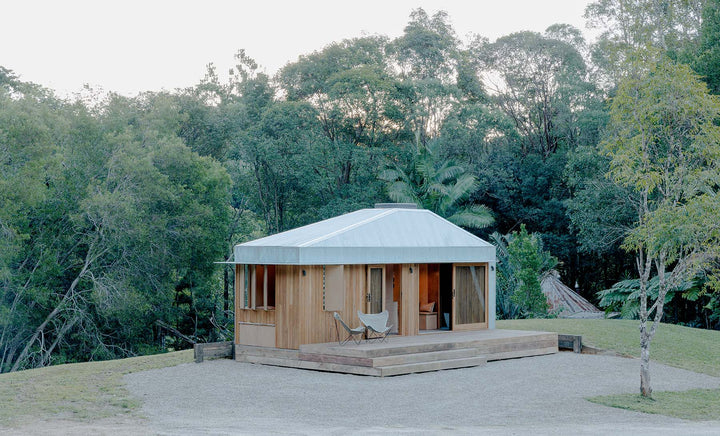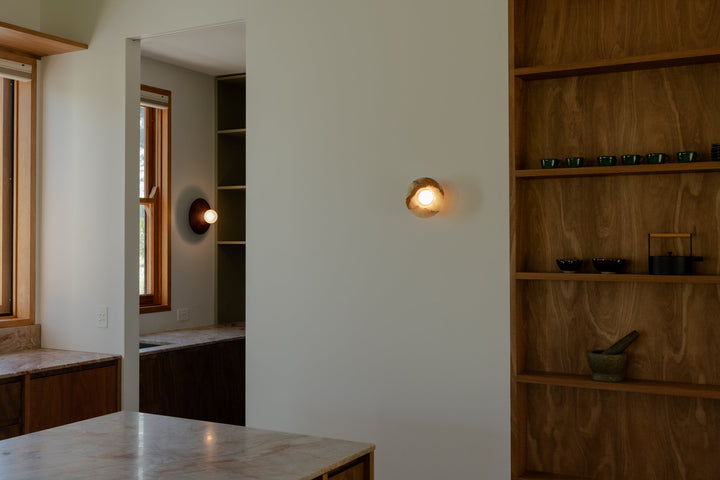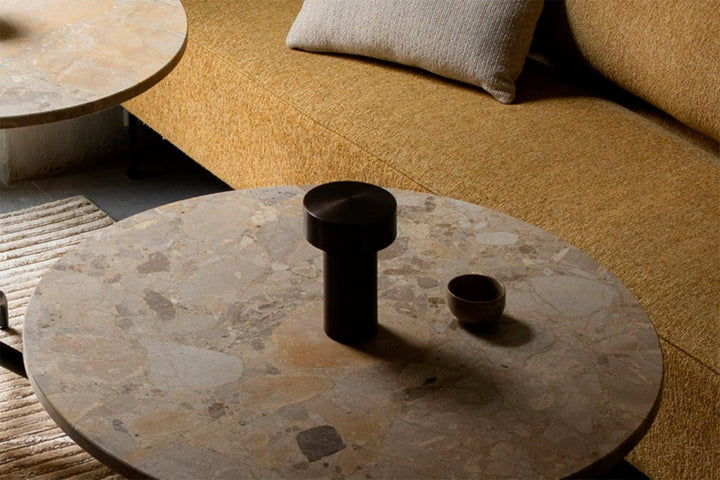Alison Frith is a Melbourne-based studio ceramicist making wheel-thrown waves in the world of handcrafted homewares. Her studio (Studio Frith) was established in 2020 following years building local and national recognition, and now exists as an inspiring designated learning space for wheel-thrown ceramics.
Alison’s work has been exhibited in established galleries including Michael Reid and Manningham Art Gallery, as well as warranting several scholarships and most recently, a finalist selection in The Design Files + Laminex Design Awards.
Marz Designs began communicating with Alison in early 2017 after being introduced by an industry colleague. The attraction to her composite forms was immediate. We were specifically drawn to the objects that provided a refined attention to both sculpture and function while offering individual materiality.
We are proud to collaborate with Alison and sell her distinctive Ceramic Plinths.
We recently sat down with Alison to find out where she’s come from, and where she’s going. Read the full interview below.

What does a day in the life of Alison Frith look like?
If I’m teaching in the evening I usually spend the mornings at home and arrive at the studio a bit before lunch. My best days are when a kiln is ready to unload. I usually do that first while I mentally plan out my tasks for the day.
I generally tend to any wholesale orders first before jumping on the wheel as soon as possible and throwing for a few hours while I’m fresh. I’ll then turn the base of anything that’s ready from previous days’ throwing. It’s all about timing. Some days you have to be more flexible than others based on what’s ready to progress to the next stage.
Finally, if time permits I might glaze some work or reload the kiln to fire overnight before my students start streaming in for their evening wheel throwing classes.


“I had recently been throwing and joining composite forms to create sculptures, so I decided to scale up with the objective to make a small side table. After a bit of trial and error in the studio, I came up with the Ceramic Plinth.”

Could you please describe the process of making one of your Ceramic Plinths?
Each plinth is wheel thrown in two parts. While I use the same weight in clay, I try not to be too prescriptive with my throwing as subtle variations of the hand give each piece a lovely unique quality.
When the individual pieces are leather-hard, I score, slip and join the composite pieces to form a whole. Once constructed, I refine the profile before turning and then stamping the base. Each plinth is then left to dry slowly, sometimes over several weeks (larger works have a tendency to crack and warp in the kiln if they are not completely bone dry).
Once they have gone through a bisque firing, I glaze each piece before placing them back in the kiln for their final stoneware firing.
Where or how was the idea for the Ceramic Plinth conceived?
With an increasing amount of time spent at home over these past couple years, I am constantly thinking about things that would make our small living space more practical and enjoyable.
During one of the early lockdowns in Melbourne, my partner mentioned he would like a small table next to his favourite armchair, where he could put his morning coffee. I had recently been throwing and joining composite forms to create sculptures, so I decided to scale up with the objective to make a small side table. After a bit of trial and error in the studio, I came up with the Ceramic Plinth.
What are the most important aspects of your work i.e. form, colour, scale?
Form, glaze and more recently (as my work gets bigger), scale are integral to my practice. When you’re working in 3D, all the elements have to work together. There needs to be cohesion with the form and glaze finish. And while it sounds obvious, if something is designed to be functional it’s really important that it’s fit for purpose.
With the Ceramic Plinths for example, I wanted the table to be sturdy so I kept the bottom specifically weighted to ensure it wasn’t easy to tip over. I also chose to high fire each piece to increase strength and durability.
Initially created for function, each Ceramic Plinth is also designed to serve as stand-alone objects when not in use.
Is the kiln a factor in expanding your practice — does the size of the kiln determine or limit the scale of your work or ceramic work in general?
Kilns are integral to any studio ceramicist. For my practice it’s essential I have a kiln on site. Unfired clay is far too fragile to transport, especially when you are working with a larger scale.
While I’d always love a bigger kiln, sometimes it’s good to have constraints. As scale increases, so does the potential for error through drying, warping, cracking and temperature variation in the kiln.
At the moment I can only fit two plinths in each firing, sometimes this can be frustrating but it also forces me to work at a slower pace and consider each piece selected for firing.
It’s important to be surrounded by a community of like-minded people – this is what keeps me motivated.
What was your journey to this point? Were you interested in sculpture from a young age or did it happen by chance?
I started ceramics as a hobby – my parents actually got me a wheel throwing course for Christmas one year. After a couple of years of going to casual lessons I decided to take the plunge and study ceramics full time.
While I’ve always focused on wheel throwing, over the past couple of years I started to scale up and join forms together. I first started with small sculptures, which slowly progressed into the Ceramic Plinths. Initially created for function, each plinth is also designed to serve as stand-alone objects when not in use.
Who inspires you and what motivates you to keep making?
Any creative soul who continues to persevere – especially in these turbulent times! I used to place strong emphasis on renowned ceramicists such as Gertrud Vasegaard and Hans Coper, but in recent years I’ve been steering away from ceramics.
It’s nice to be exposed to different mediums such as textiles and furniture. My studio is great for this as it is filled with furniture designers, steelworkers, shoemakers, photographers and painters. It’s probably watching these people slog it out that gives me the confidence to continue. It’s important to be surrounded by a community of like-minded people – this is what keeps me motivated.

Alison’s Ceramic Plinth is a Marz Designs favourite. As a functional sculpture, this elegant piece can be adorned by your morning cuppa, your current book, or by nothing at all.
Due to Alison’s selection of clay bodies and studio glazes, as well as their handmade nature, each one of Alison’s Ceramic Plinths bare subtle variations that mean no two pieces are the same.
For more information about colour, materials, size and lead time, please view the product here.




